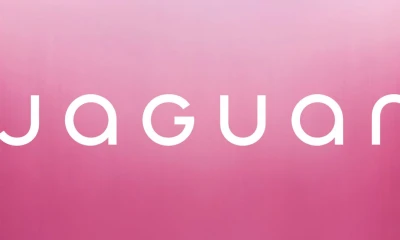It’s incredible that Resident Evil Village plays as well as it does on the iPhone. The game is every bit as captivating as when I first played it on the PS5, and I was blown away by how well it translated to the tinier screen. But the game’s graphics aren’t the most interesting thing going on with this release — I’m much more excited for what it might be teasing for Apple gaming in the future.
Technology
Resident Evil Village on the iPhone could be a preview of Apple’s gaming future
Resident Evil Village plays really well on an iPhone, but the game’s graphics aren’t the most interesting thing going on with it — I’m much more excited for what it might be teasing for Apple and Mac gaming in the future.

Let’s start by talking about Village first. I’ve only played for a little over an hour on a prerelease version of the game on an iPhone 15 Pro Max — long enough to survive the attack by the Lycans in the snowy village. One area the port doesn’t translate well is to the iPhone’s touchscreen. I tried to use the game’s touch controls, but they were awful; they were a challenge to use even in the game’s initial sequence, where all you have to do is carry a baby to a crib. But the iPhone itself holds up as a console. Once I broke down and connected my DualSense controller, things felt pretty much just like I remembered they did on my PS5, and the controls came back to me right away. (That familiarity, unfortunately, didn’t make the Lycan attack any less stressful.)
Even though that part played great, I’ve already run into a few small annoyances with the iPhone port. Like some other mobile games, I had to download Village in chunks. I understand why — Village is a different animal than something like Words With Friends — but I still wasn’t a fan of waiting through the initial app download, then a multi-gig download after opening the app, and then another multi-gig download after I “purchased” the main game and the Winters’ Expansion DLC in the app. Parts of the game also haven’t been adapted to the phone’s interface, either. When I was using my DualSense controller, the in-game buttons featured an Xbox / PC controller layout. In photo mode, a prompt suggested that I use my computer’s screenshot feature.
These are relatively small issues, though, and I honestly marveled at being able to play the full Resident Evil Village on a device that fits in my pocket. I haven’t traveled much beyond the village attack, so I can’t tell you how well the iPhone port holds up in later sections of the game. And Village on the iPhone will work only on the iPhone 15 Pro series because of its A17 Pro chip; I sadly can’t play Village on my beloved iPhone 12 Mini. Still, it’s pretty damn cool that Village can run on an iPhone at all.
It’s also a sign of what Apple might have in store for its broader gaming strategy. The iPhone is already a humongous platform for games, which happened even despite things like Apple’s platform fees and restrictions on cloud gaming. But while there are many higher-fidelity experiences like Genshin Impact or Call of Duty: Mobile, most iOS games aren’t the types of things you’d sit down and play on your console or a computer.
That’s something Apple is starting to fix. iOS games are a huge cash cow for Apple, but gaming on a Mac is almost certainly not, so you can see why the company might want to change that. To help give the Mac any sort of gaming relevance at all, Apple has been making strides since the Mac’s transition to custom silicon to convince developers to bring over their games, but PC still has a vastly larger number of titles available — even Valve dropped Mac support for Counter-Strike 2.
But guess which AAA game you can play on a Mac? That’s right: Resident Evil Village, which came to Apple Silicon Macs almost exactly a year ago.
That Apple Silicon part is key. Apple’s phone and computer chips share similar architectures, so if a developer is already porting a game to run on Apple computers, it’s suddenly easier for Apple to convince developers to bring their games to the company’s phones and tablets, too.
The pitch is getting some traction. Capcom is also gearing up to release the excellent Resident Evil 4 remake for the iPhone 15 Pro, iPads with M1 chips, and Macs with M1 chips later this year (for a full $60), and if you buy it on one of those platforms, you can play it on any of them thanks to Apple’s Universal Purchase feature. (Village, notably, does not support Universal Purchase.) A port of Death Stranding Director’s Cut is coming to those devices as well. Assassin’s Creed Mirage and The Division Resurgence are in the works for iPhone 15 Pro, too, so I wouldn’t be surprised if they also make their way to Mac.
“We really look at these many generations of SoC architecture across the phone, across the iPad, across now, Apple Silicon Macs. And we’d see that as part of one big unified platform, a graphics and gaming platform in particular,” Apple’s Jeremy Sandmel said in an interview with IGN. “So that’s the opportunity here for these game developers.”
Perhaps we’ll get more details at Monday’s “Scary Fast” event. The show is expected to feature new Macs that could be, well, scary fast, which might mean they’ll be Apple’s first computers with its next-generation M3 chips built using TSMC’s 3nm process. MacRumors reports that the event could focus on Apple’s high-end gaming efforts and possibly include a “major tie-in with a Japanese game developer.” If Apple does announce new Macs, it’ll likely also talk about games and features like macOS Sonoma’s game mode, which prioritizes access to a Mac’s CPU and GPU, and its Proton-like Game Porting Toolkit that makes it easier to bring Windows games to a Mac.
Dream with me a bit here: imagine if a lot more games come to Mac, support Universal Purchase so that you only have to buy them once, and have cross-save functionality so that you can carry over your progress across Apple devices. That means that, if you’ve already bought into the Apple ecosystem, you could theoretically be able to play any of those games, whether you’re at your desk on your Mac or on your iPhone on the bus, and pick up right where you left off on whatever device you last played.
This is a pitch we’ve heard before with things like the Steam Deck, Xbox Cloud Gaming, or even as far back as the Super Game Boy. But as someone who has only bought Apple phones and computers for more than a decade, I’d love to play games interchangeably on an iPhone and a Mac.
If this all worked like I’m imagining, I’d be a lot more willing to buy games on Apple devices rather than other platforms. I can’t see myself leaving the Apple ecosystem anytime soon, so it would be great to be able to play games on the devices I already carry with me nearly everywhere anyway. I’m guessing I’m not the only one, so that’s probably why Apple is starting to push into high-end gaming after generally ignoring it. And the company already has a robust (and now more expensive) subscription service in Apple Arcade that could be adjusted to support this dream future.
I really do hope Apple talks up its gaming plans at Monday’s event. But while I wait, I’ll try to cower my way through Village on my iPhone — a sick part of me wants to experience the scariest part of the game all over again.
-

 Sports 2 days ago
Sports 2 days agoFormer cricketer, umpire Nazir Jr. passes away
-

 Business 1 day ago
Business 1 day agoGold prices rise sharply in Pakistan
-

 Pakistan 1 day ago
Pakistan 1 day agoBushra Bibi's allegations against Saudi Arabia 'baseless': Ex-COAS Qamar Bajwa
-

 World 1 day ago
World 1 day ago'Negligent act': Indian Navy submarine collides with fishing vessel
-

 Pakistan 1 day ago
Pakistan 1 day agoUK announces new Rs37bn climate finance program for Pakistan
-

 Weather 2 days ago
Weather 2 days agoSmog returns, Lahore again tops most polluted cities
-

 Crime 2 days ago
Crime 2 days ago39 killed in Parachina-Peshawar vehicles firing
-

 Technology 1 day ago
Technology 1 day agoCrypto giant Bitcoin touches record high of $100,000

:format(webp)/cdn.vox-cdn.com/uploads/chorus_asset/file/25038783/RE_Village_iPhone_01.png)
:format(webp)/cdn.vox-cdn.com/uploads/chorus_asset/file/25038790/RE_Village_iPhone_02.png)





























